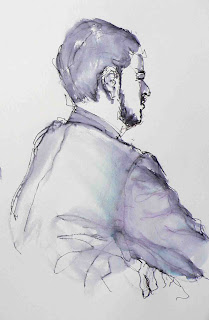
I arrive early but they've already started - what's happening? It's Lord Hope's valediction: he is retiring today. Grandchildren and a teddy bear are in the front row.
A speaker points out that, for counsel, appearing in the Supreme Court can be 'among the most alarming and potentially intimidating' of experiences (and later today the judges do make counsel's ears go pink).
Lord Hope does not look in urgent need of retirement. He ruminates: 'Ten minutes from time you're extracted from the maul by the referee and shown the red card...I do regret this is all over.'
After amiable speeches, the crowd departs and the continuing echo of 9/11 is analysed in legal abstraction. In R v Gul, does the Terrorism Act 2000 catch military attacks by a non-state armed group on state or inter-governmental organisation armed forces in a non-international armed conflict? Be careful what you upload on YouTube.
Lady Hale enquires into the logic of the argument. 'So why can the Prime Minister not be stopped and searched by the police?'
Had any activists been in court, there would have been a rafter-rending cheer. I think of the armed police outside Tony Blair's house in Connaught Square. And who parked the red sports car with the number plate 1 RAQ there?
Rootling quietly in my art bag, I disturb the kitchen timer with which I time life-class poses. The movement makes it start ticking rapidly, like the heart of a shrew. I can't turn it off. The only thing about my person with adequate sound insulating properties is my person. I sit on the timer, feeling like the crocodile in Peter Pan.
In the café, counsel snap up souvenirs at the till with their snacks. One buys two pens, a china mug and a Christmas tree bauble (the cashier gently takes it out of its box and inspects it in her palm, as my mother would examine each egg in a box before buying it).
Perched by the window outside Court 1, where you used to be able to watch the late Brian Haw protesting from his Parliament Square complex, I speed-draw Westminster Abbey.
An aeroplane crosses the view. I should have drawn it, to commemorate the queasy shock of seeing one in the sky after the temporary flight ban was lifted in 2001.
A generality of soft human beings is wafting around. How can you protect people from people?
More pictures if you scroll down.

















